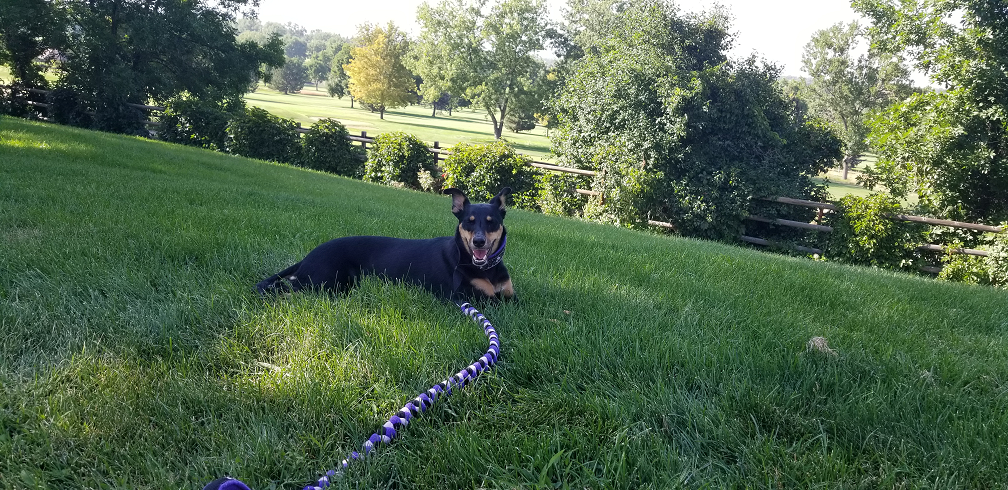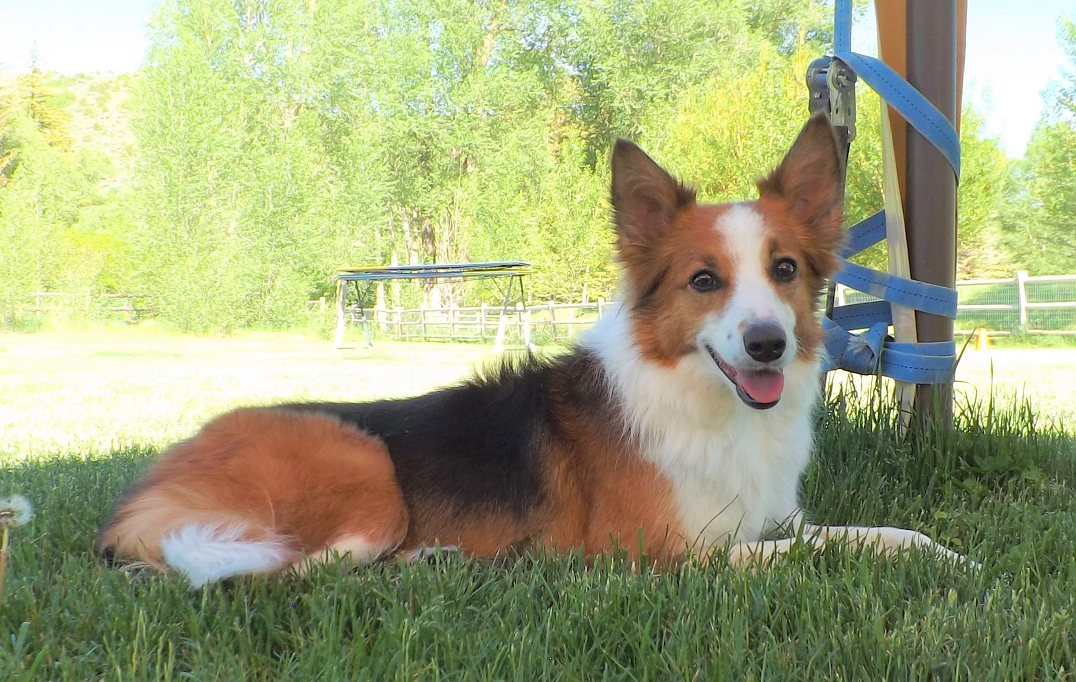Written by Lorrie Reynolds
Categories
When pet owners hear the word “tricks”, they think of all the cute things people teach like fetching slippers or sitting pretty. The reality is that everything we teach is a “trick”, and instructors use that term to include things like keeping four paws on the floor when greeting people, learning how to go to a crate, or sitting on cue.
With that perspective, it’s easy to see why tricks are such an important thing to focus on with every dog. Here are five reasons you should teach your dog “tricks”.
You Want a Dog You Can Live With
Teaching your dog to leave food alone, walk nicely on a leash, or get off the couch makes life with dogs a joy rather than a hassle. If you’ve ever envied the people whose dogs seem to listen to every word, realize that they have just taught their dogs more tricks than you have (so far). There’s nothing magical about training a dog who is easy to live with. It takes knowledge, practice, consistency, and patience.
Your Dog Needs Physical and Mental Exercise
Many, if not most, destructive or disruptive behaviors occur because a dog doesn’t get enough exercise. Physical exercise is great, whether it is playing a game of fetch or taking a long walk. However, mental exercise is also important.
Learning new things takes energy, as you know if you’ve ever tried to use unfamiliar technology. Trick training can wear your dog out just as much as a 3-mile run.

You Want to Create a Bond With Your Dog Through Training
Most people get dogs for the love, companionship, or to do fun activities with. It’s no fun to spend time with someone who doesn’t care about being around you, or who doesn’t listen to the things you say.
Training your dog creates a deeper relationship because you actually have to interact with him in a way that increases communication on both ends of the leash. You learn more about your dog and your dog learns what you want. Spending time together having fun (and yes, training is supposed to be fun!) increases the bond between you.

You Want to Decrease “Bad” Behaviors
Bad is in quotation marks for a reason. Dogs don’t know there are “bad” behaviors until we have taught them what we want them to do. Rather than eliminating in the house, we have to teach them that we want them to eliminate outside. If we don’t want them to chew on “our” stuff, we have to teach them what they CAN chew on.
Dogs don’t come pre-wired with a set of cultural norms that make behavior inherently “good” or “bad”. We have to teach them what we want so they don’t do what we don’t want.
Between sufficient mental and physical exercise and an understanding of what we want them to do, we can decrease or eliminate the behaviors we don’t want like jumping on guests, taking food off of the counter, or chewing on our shoes. Bored dogs will “create” jobs to keep them busy. Tired dogs would rather rest and relax.
You Want Them to Be Safe
There are four “tricks” that I consider critical to your dog’s safety. They are come when called, leave it, an emergency stop, and voluntarily leash up.
Twice I’ve dropped and broken a glass when my dogs were with me. An emergency stop kept them in place until I could safely move them away.
If you take medication, or there is ever something dangerous to ingest when you are out for a walk, a “leave it” cue is essential when you drop a pill or see something you don’t want them to eat.

If your dog ever accidentally gets loose, a solid recall ensures that they will come back to you, and a “get dressed” that is on cue (leash up) makes it simple to catch them. If we are on an off-leash walk, as soon as I hold the open loop of the leash out, my dogs come running to stick their heads through. It has saved me more than once when there was an unfriendly dog on the path.
Most dogs are taken to the shelter in the difficult “teenage phase” from 9 – 18 months. Behavior issues are in the top 5 reasons for surrendering. Spending time on training can eliminate difficult behavior issues and keep your pet in your household, where he belongs.

Your Dog Will “Learn to Learn”
When you started Kindergarten, you probably didn’t know there was a process for learning. In high school or college, you learned ways to study that worked for you, how to organize to be successful in school, and how to manage your time. Dogs need to “learn to learn” too!
Every time you teach your dog a “trick”, you are not only teaching the specific behavior, you are also teaching your dog about the process of learning. A dog who is clicker trained first had to learn what the sound meant, and that he could influence the click by his behavior. The more you teach your dog, the better he understands the learning process, the easier it is to teach the next thing.
If you’ve ever wondered how trainers teach so many tricks, it all comes back to this. Their dogs understand the process of learning, making it much easier to teach successive and more complex tricks. “The more your dog learns, the easier it is to learn the next thing.”
Today’s Tip
Teaching your dog “tricks”, including basic obedience behaviors, benefits both of you in many different ways. Learn fun ways to teach things and you will never run out of activities to do with your dog.
Struggling to Find Time to Train Your Dog?
Get this FREE eBook and learn the 3-step system that helps you find training time, without disrupting your schedule! You can check it out HERE.
You Might Also Like…
Five Ways to Crush It at Your Next Dog Agility Seminar
Going to a dog agility training seminar? Check out these five tips to maximize your return on investment!
Read This Before Deciding on Your Agility Dog’s Contact Performance
Which contact performance, running or stopped, is right for your team? The answer might surprise you.
Is Your Agility Dog a Pinto or a Ferrari?
If you’ve moved up from a slow or moderately-fast agility dog to a speed racer, here’s some advice to make your life easier.
Get tips, stories, discounts, and early notification of events and new courses delivered straight to your inbox! Join the community!
Top photo: Copyright 2018 Great Dane Photos. Used with permission.
Second photo courtesy of Howling Moon Photography.





0 Comments